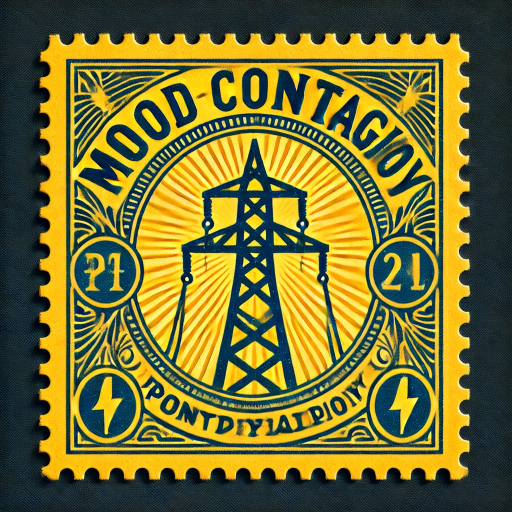Do you lead people? Your mood is like electricty - it spreads

GET THE #1 EMAIL FOR EXECUTIVES
Subscribe to get the weekly email newsletter loved by 1000+ executives. It's FREE!
Picture this: You walk into your office on a Monday morning. The CEO breezes past, radiating enthusiasm and energy.
Suddenly, the entire floor seems to perk up. Conversations become more animated, ideas flow freely, and there's a sense of possibility in the air.
Now imagine the opposite scenario: The CEO trudges in, visibly stressed and irritable. Within hours, the mood darkens.
Employees speak in hushed tones, creativity stalls, and a cloud of anxiety settles over the workspace.

This phenomenon, known as "mood contagion," is more than just anecdotal. It's a powerful force shaping organisational culture and performance, backed by compelling research.
And as a leader, understanding and harnessing this emotional ripple effect could be your secret weapon for driving success.
The Science of Spreading Emotions
According to research by Daniel Goleman, Richard Boyatzis, and Annie McKee, authors of "Primal Leadership," in the Harvard Business Review, emotions travel through an organisation like electricity through wires.
Their findings reveal that a leader's mood and accompanying behaviors are potent drivers of business success.
"From this body of research, we discovered that emotional intelligence is carried through an organization like electricity through wires," the authors state.
"To be more specific, the leader's mood is quite literally contagious, spreading quickly and inexorably throughout the business."
This emotional transmission happens through a neurological process called mirror neurons.
When we observe someone expressing an emotion, our brain activates the same neural pathways as if we were experiencing that emotion ourselves.
In a work environment, this means the leader's emotional state can rapidly influence the entire team.
The High Stakes of Emotional Leadership
The implications of mood contagion are profound.
If a leader's emotions are indeed such potent drivers of business success, then emotional intelligence becomes not just a "soft skill," but a core leadership competency.
Goleman and his colleagues argue that "a leader's premier task—we would even say his primal task—is emotional leadership."
They emphasize that "a leader needs to make sure that not only are they regularly in an optimistic, authentic, high-energy mood, but also that, through their chosen actions, their followers feel and act that way, too."
This doesn't mean leaders need to be relentlessly cheerful. Authenticity is key. The goal is for leaders to cultivate genuine positive emotions and learn to manage negative ones effectively.
The Double-Edged Sword of Mood Contagion
Mood contagion can be both a powerful tool and a potential liability. Positive emotional leadership can create a climate where:
- Information sharing thrives
- Trust is abundant
- Healthy risk-taking is encouraged
- Learning flourishes
Conversely, leaders with low emotional intelligence can foster environments rife with fear and anxiety.
While this might drive short-term productivity, it's unsustainable and often leads to burnout, high turnover, and ultimately, poor business outcomes.
As the researchers note, "Because tense or terrified employees can be very productive in the short term, their organisations may post good results, but they never last."
Practical Steps for Emotional Leadership
Given the significant impact of a leader's emotional state, how can you harness the power of mood contagion for positive outcomes? Here are some actionable strategies:
- Start your day in a good mood. Actively practice this on the way to work. It's not just about you; it's about setting the tone for your team.
- Awareness is the first step. As soon as I read this article, I realised how important it was for me to be aware of my mood and how it was affecting my team.
- Encourage your leadership team to model positive emotional behaviors. Remember, mood contagion works both ways.
